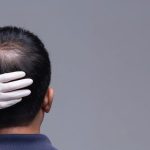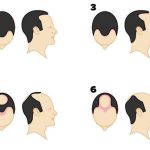Growing up in New England, Tristan Fraser was a sandy-haired football fan who worshipped Tom Brady — from the quarterback’s legendary passes to his matinee-idol looks.
So when Fraser’s mane began thinning in his early 20s, he turned to his hero for inspiration. Namely, Brady’s remarkably revitalized hairline, often speculated to be the product of a successful hair transplant. (While Brady reportedly visited hair-regrowth specialists in 2008 and 2010, he has never publicly commented on it.)
“More people now are getting something done [to combat balding] — Tom Brady did,” says the supermarket manager based outside Providence, R.I. “A lot of people were making fun of him, but I don’t understand why guys would let it go when you can do something. You don’t just give up; you fight it.”
“I haven’t worn a hat since,” Fraser, 31, boasts. “On vacation recently, the bartender carded me — it made me feel great.
“The doctors asked what I want out of this. I said, ‘Eternal youth’ — and I got it,” he says, adding: “I’m not embarrassed by it.”
The Frasers are just two of the many young men increasingly opting for hair-transplant surgery — once taboo and stigmatized thanks to decades of bad plugs and unsightly scars.
But just-released figures from the International Society of Hair Restoration Surgery reveal a 27 percent increase in transplants in the US since 2012, with patients plunking down $2.5 billion for hair-restoration surgery annually. More than 80 percent of the increase comes from men.
“There’s less stigma as famous people are coming out of the closet,” says Dr. Robert Bernstein, a hair transplant surgeon in Midtown. “Soccer players, football players — they’re admitting they’ve had the surgery. Patients bring in pictures of [George] Clooney, Brad Pitt. The stigma of the old plugs is fading.”
While celebs aren’t writing signed confessions, there’s plenty of speculation about which high-profile men may have gotten procedures — such as LeBron James, Kevin Costner, John Travolta and Jeremy Piven.
Then there are those who see no shame in their game — including Bosley spokesman Joey Fatone of ’N Sync, one-time boy-bander AJ McLean, and soccer stud Wayne Rooney, 29, who in 2011 tweeted: “Just to confirm to all my followers I have had a hair transplant. I was going bald at 25 why not. I’m delighted with the result.”
“In the last six months, over 50 percent of [my] patients have been younger than 30,” says Dr. Keith Durante, a hair-restoration specialist in NYC and Long Island. “They’re in the dating scene having a hard time finding a date.”
And he says the shame is gone.
“It’s like a woman saying, I’m going for Botox. It’s almost like a badge of honor: ‘I can afford this — I can get my boobs done,’ ” says Durante.
Plus, techniques have advanced, so new ’dos look more natural and less like the old, obvious plugs that called doll hair to mind.
Some doctors still prefer the traditional procedure of taking strips of the scalp from the back of the head — where hair growth is resistant to hormones linked to baldness — and replanting them in bare spots. But newer, automated FUE (follicular unit extraction) hair transplants, done with the minimally invasive NeoGraft device, allow surgeons to remove and insert individual hair follicles, yielding a more natural look. If done correctly, transplanted follicles should continue to grow hair indefinitely.
“A teenager shouldn’t have to worry about his hair falling out at 17,” says Phil, who nearly always wore hats to cover up his rapidly receding hairline. “But we live in a superficial society — it kind of hits your confidence.”
In high school, Phil was already saving up for the $10,000 surgery with Bernstein.
Five months post-surgery, the writer has a whole new air of confidence.
“I want to be in front of the camera,” he says. “Now I can worry about one less thing.”
His small circle of friends who knew about his decision were supportive: “They said, ‘Do whatever makes you feel good about yourself.’”
Cost for the procedure ranges between $5,000 and $20,000 — depending on the amount of hair to be harvested and transplanted.
“If someone really wants it, he’ll find a way. They pay outright, they finance it, borrow from relatives,” says Durante of the ways patients come up with the cash.
Nick Thomas, whose doctor opted to do the old strip technique, shelled out $9,000.
“I have no shame — it’s made a big difference in my dating confidence. Even girls who found out said it looks unbelievable,” says the 35-year-old longshoreman from Kenilworth, NJ, who had the surgery in November.
“The irony is that I’m 42 now and I look younger than I did at 32,” says the founder of an eponymous East Side salon.
“I’m going to have another transplant in the next five years,” he says. “Everything else my doctor didn’t touch is still moving backwards.
“People are in the dark about it — they don’t know any better. They think it’s uncool, but it worked for me, and it’s the best thing I’ve ever done.”
The groom-to-be plopped down $20,000 for an FUE with NeoGraft hair transplant five months ago — well ahead of his spring 2016 wedding, since the results take nearly a year to fully show.
“I did college sports, I’m an avid workout guy and I’m in good shape,” explains the 41-year-old Long Island City-based strategist for an ad agency. “But male pattern baldness runs in my family, and with wedding pictures coming up you want to look the best you can.
“The time was right to do it now — before I become a golf ball. It [had] to be now when it’s less obvious. When I get married everyone I know will be there taking a lot of pictures.
“The reality is, I’ll never be Fabio — you don’t go from being bald to having a coif — but certain areas will look thicker and I’ll have healthier-looking hair,” says Poladoro. “It sucks you have to pay that much for that, but what are you going to do?”
THE MANE EVENT: HOW IT WORKS
The technique: Follicular unit extraction (FUE) allows single hair follicles to be removed from the scalp and placed elsewhere. Some doctors use what’s called a NeoGraft machine, a hand-held surgical device that extracts follicles. There is no cutting or scarring of the scalp, and the results tend to look more natural than traditional transplants. Sedatives and local anesthesia are administered, and recovery time ranges from seven to 10 days. Expect mild tenderness in the days following the procedure.
The cost: $5,000 to $20,000, depending on amount of hair replaced
The hair: Doctors extract hair from the back rim of the head because those follicles aren’t affected by hormones linked to baldness. “That’s the prime real estate,” says Dr. Keith Durante. Once the follicles are transplanted to the front of the head, they should continue to grow.
The results: Results take about a year to fully show. Most patients have two to four transplants over a lifetime — either to double the density in the affected areas or to address additional hair loss down the line. Topical treatments such as Propecia and Rogaine can also be used to maximize volume and growth.






